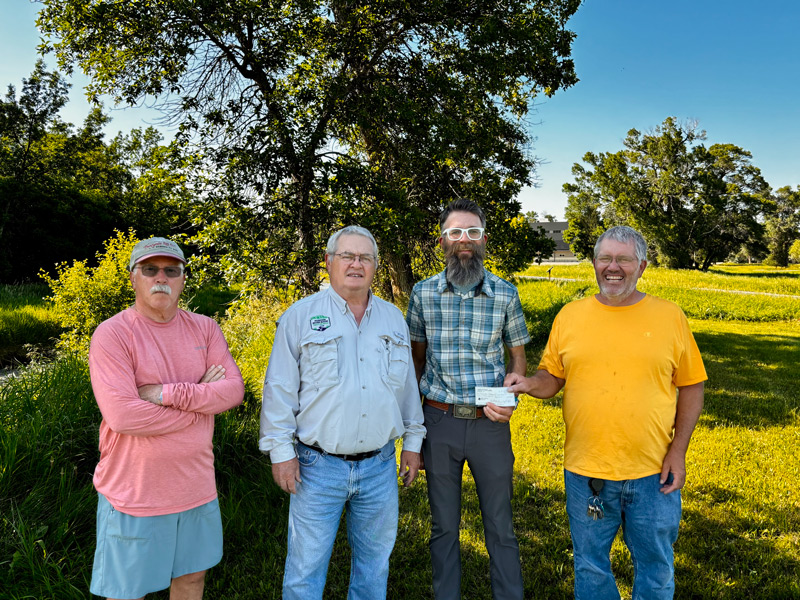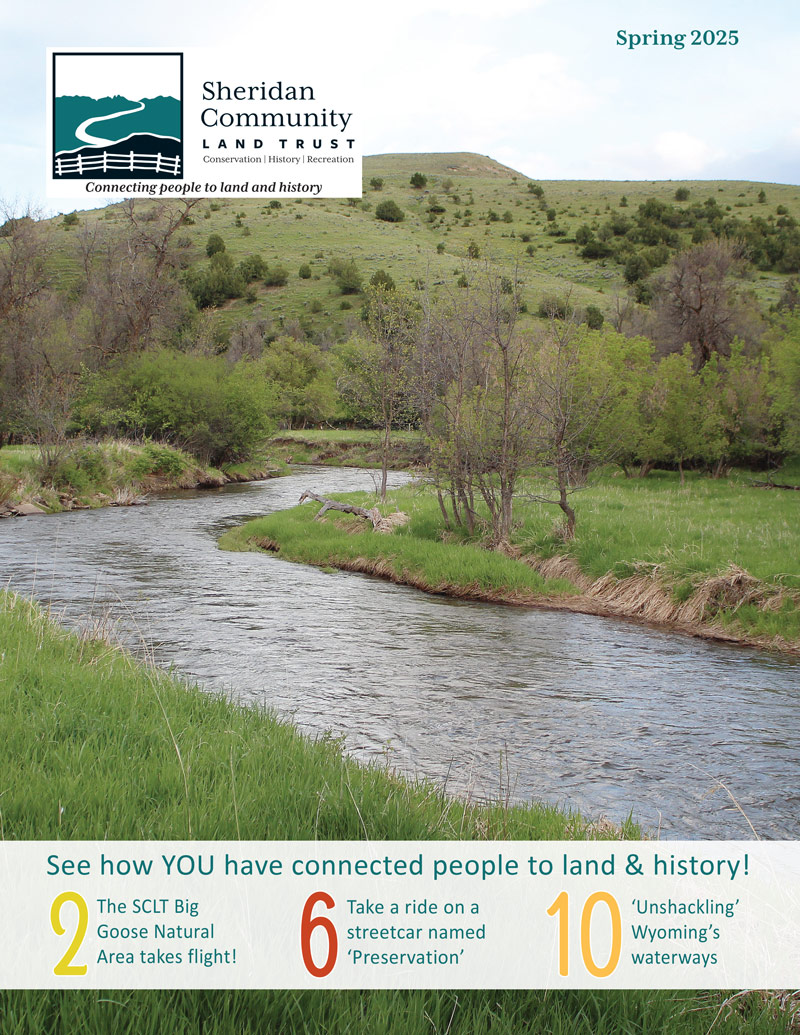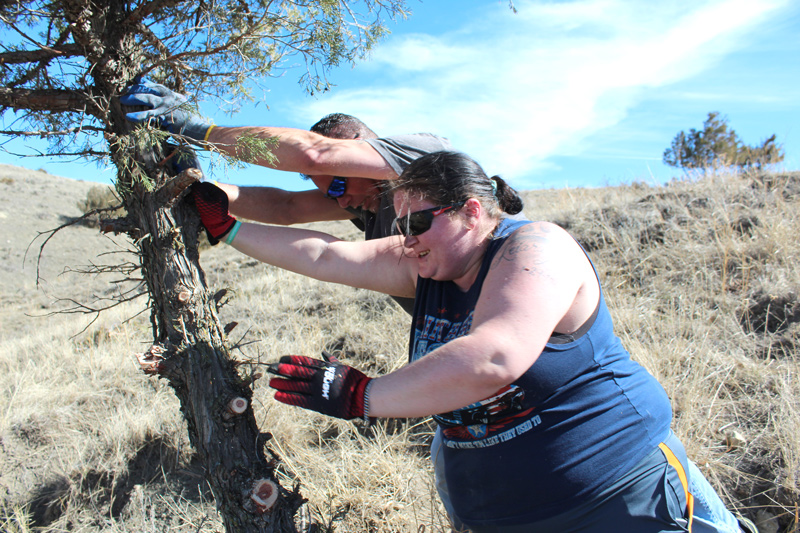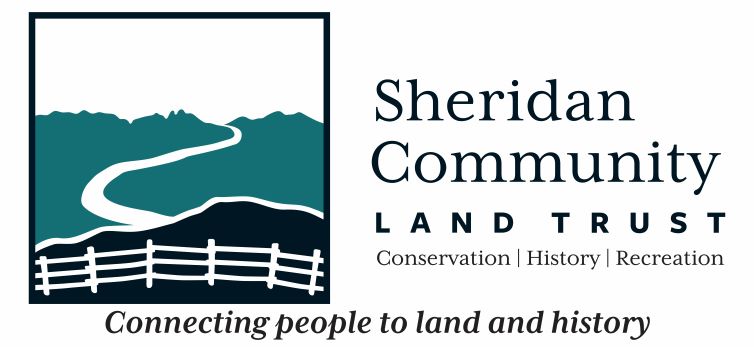In early spring, SCLT staffers were on a shed hunt in the high foothills just beyond Big Goose Canyon. However antlers weren’t this hunt’s quarry. The prize? Three GPS collars that had dropped from mule deer does a few days earlier.
Equipped with coordinates of the drop points and an antenna to pick up a radio signal emitted by each collar, SCLT staff strapped on snowshoes to trek through snowfields that had lingered longer than usual this precipitously precipitate winter.
After a steep climb to the top of the tallest foothill in sight, the antenna affirmed that the collars could be found by continuing down the hill’s back slope. Of course…
“This winter has been extremely stressful on our wildlife, especially mule deer. It is more important than ever that we decrease the additional stress put onto wildlife, and make it easier for them to access habitat.” ~ Meghan Kent, SCLT Conservation Director
Once secured, detailed data the collars collected about where the deer have been can be downloaded. Kent said this information is vital to conserving mule deer in the northern Bighorns. As the initial study winds down, conservation efforts which will ramp up in the coming years as a complimentary five-year study that will be conducted by Wyoming Game and Fish Department is about to begin.
These particular collars belonged to Does 140, 143 and 145, and were first deployed in December 2021 as part of a pioneering study SCLT partnered with other conservation partners to carry out. These deer spent that time living in the foothills above the confluence of Big Goose Creek and Rapid Creek.
By knowing where the mule deer have been, Kent said wildlife biologists and conservationists like herself “know where to focus our efforts on protecting mule deer habitat.”
Knowing precisely where mule deer feed, breed and raise their young, and the places they use as they move between those important lands opens the door to targeted work that can make a big impact for deer while making every dollar count.
Especially, from kind people like you who care about conserving wildlife like mule deer which must navigate growing pressures from people and Mother Nature.
Kent envisions helping landowners remove, replace or modify fences where appropriate to make it easier for mule deer to move across their land. In some cases, it may make even more sense for landowners to voluntarily and permanently conserve places where mule deer breed or overwinter.
What can I do to help mule deer today?
Volunteer at a friendly fencing event – Kent said at least three friendly fence projects in Sheridan County and Johnson County are in the works this summer. Sign up for SCLT’s Volunteer emails and you’ll be the first to know about when and where these important projects will take place.
Use wildlife friendly fencing methods on your land – One of the greatest impacts you can make is to make it easier for wildlife to move across your land. SCLT has compiled a free guide that you can use, and Kent is always eager to answer any questions you may have.
Spread the word – “Talk to your friends about friendly fencing!” Kent exclaimed. “Even something as simple as leaving a gate open so wildlife have a way to pass through without crossing a fence. Folks don’t have to come to an event to be part of the wildlife friendly fencing movement in Sheridan County.”
Download your friendly fencing guide today! You can find it here >> https://sheridanclt.org/land/friendly-fencing.









